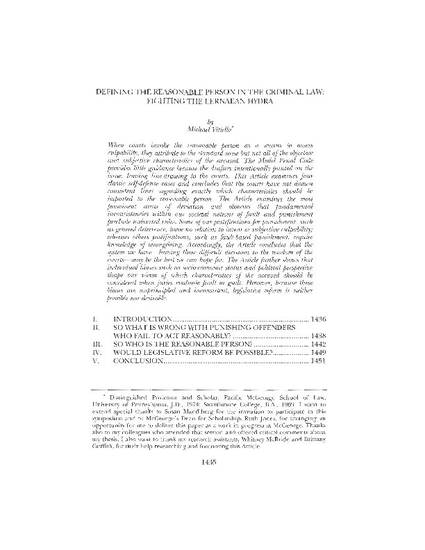
Article
Defining the Reasonable Person in the Criminal Law: Fighting the Lernaean Hydra
Lewis & Clark L. Rev.
Document Type
Article
Publication Date
2010
Disciplines
- Criminal Law and
- Law
Abstract
When courts invoke the reasonable person as a means to assess culpability, they attribute to the standard some but not all of the objective and subjective characteristics of the accused. The Model Penal Code provides little guidance because the drafters intentionally punted on the issue, leaving line-drawing to the courts. This Article examines four classic self-defense cases and concludes that the courts have not drawn consistent lines regarding exactly which characteristics should be imparted to the reasonable person. The Article examines the most prominent areas of deviation and observes that fundamental inconsistencies within our societal notions of fault and punishment preclude universal rules. Some of our justifications for punishment, such as general deterrence, have no relation to intent or subjective culpability; whereas others justifications, such as fault-based punishment, require knowledge of wrongdoing. Accordingly, the Article concludes that the system we have—leaving these difficult decisions to the wisdom of the courts—may be the best we can hope for. The Article further shows that individual biases such as socio-economic status and political perspective shape our views of which characteristics of the accused should be considered when juries evaluate fault or guilt. However, because these biases are unprincipled and inconsistent, legislative reform is neither possible nor desirable.
Citation Information
Michael Vitiello, Defining the Reasonable Person in the Criminal Law: Fighting the Lernaean Hydra, 14 Lewis & Clark L. Rev. 1435 (2010).
